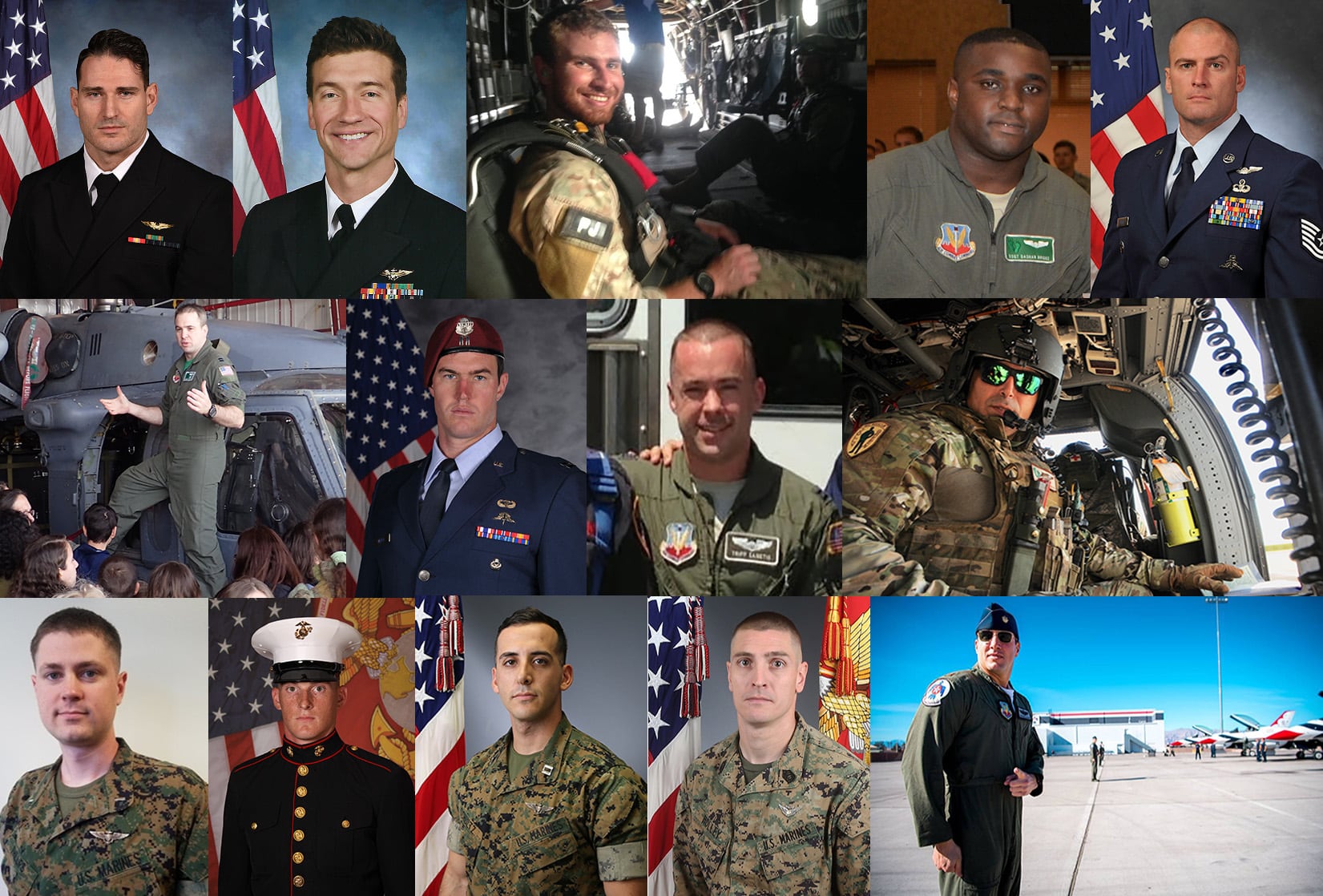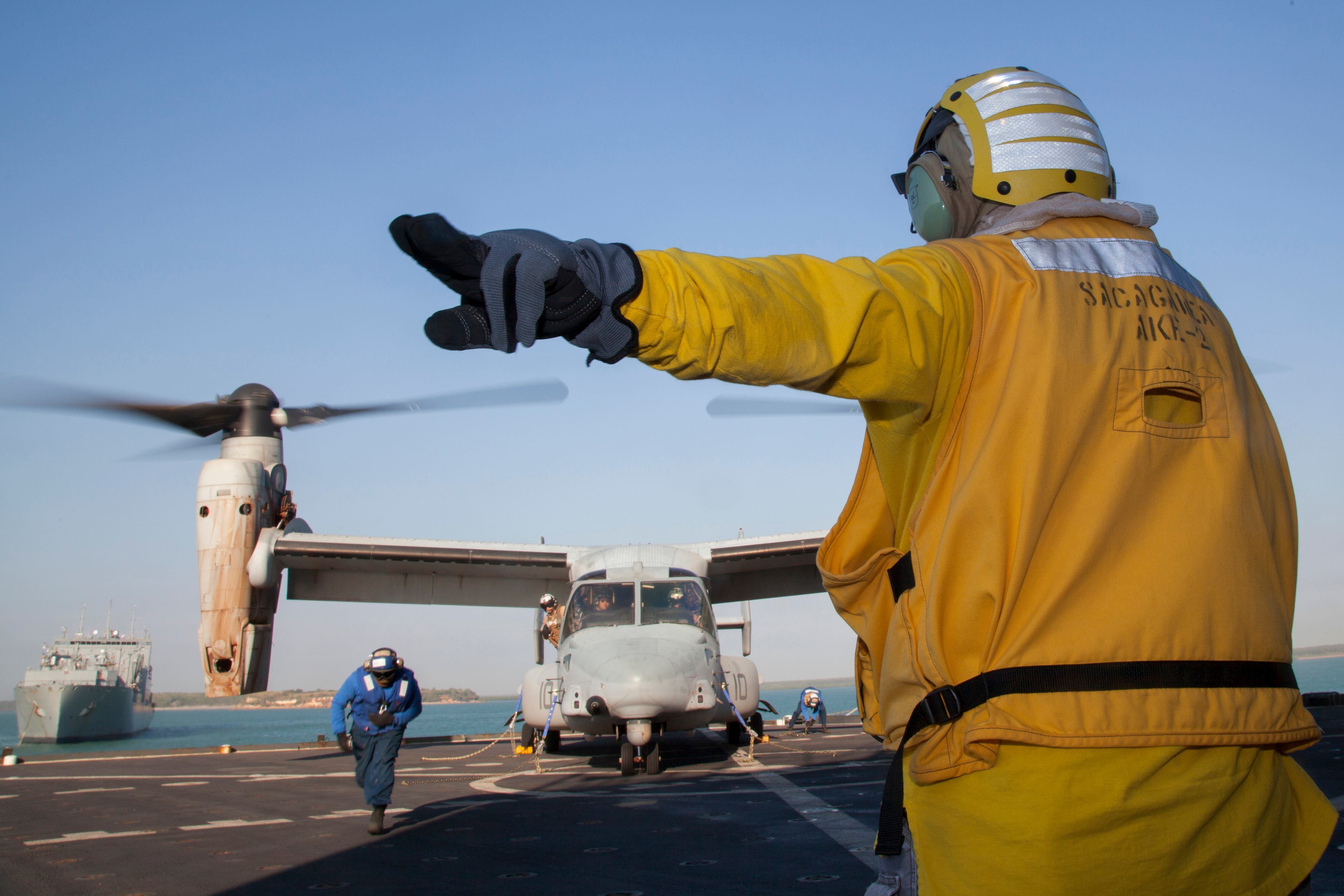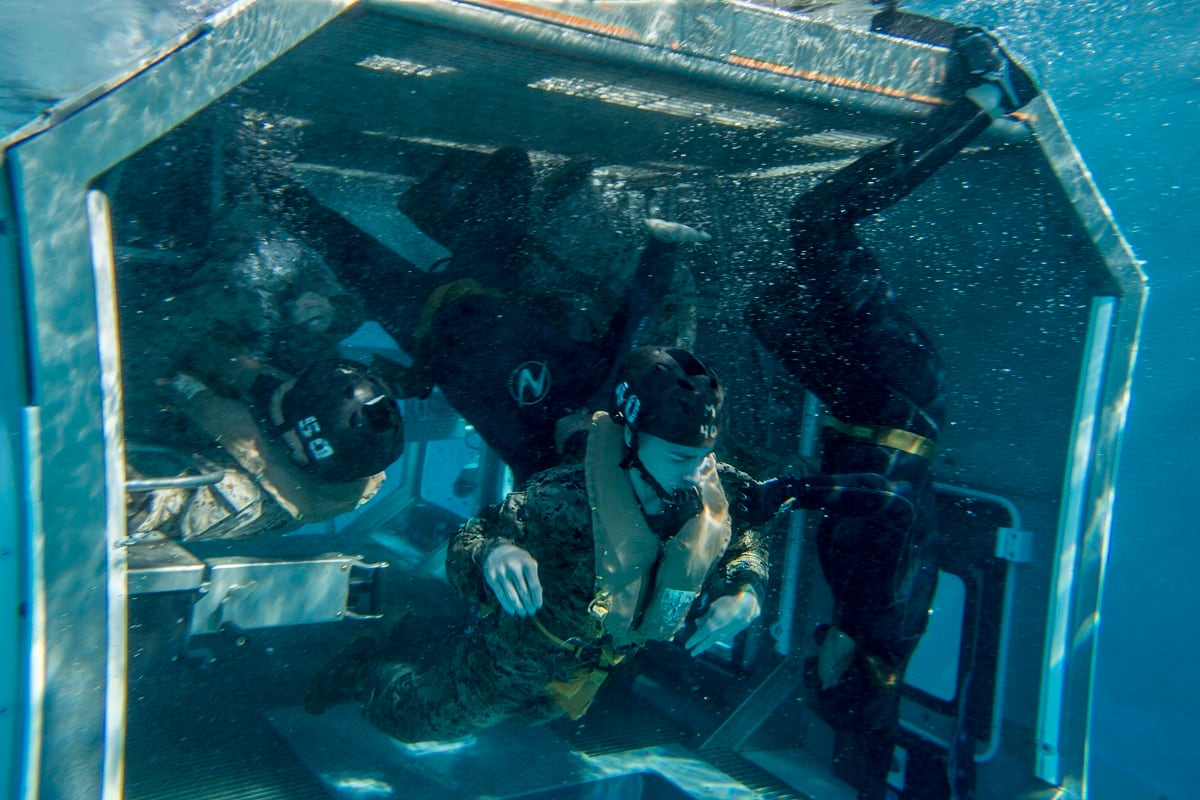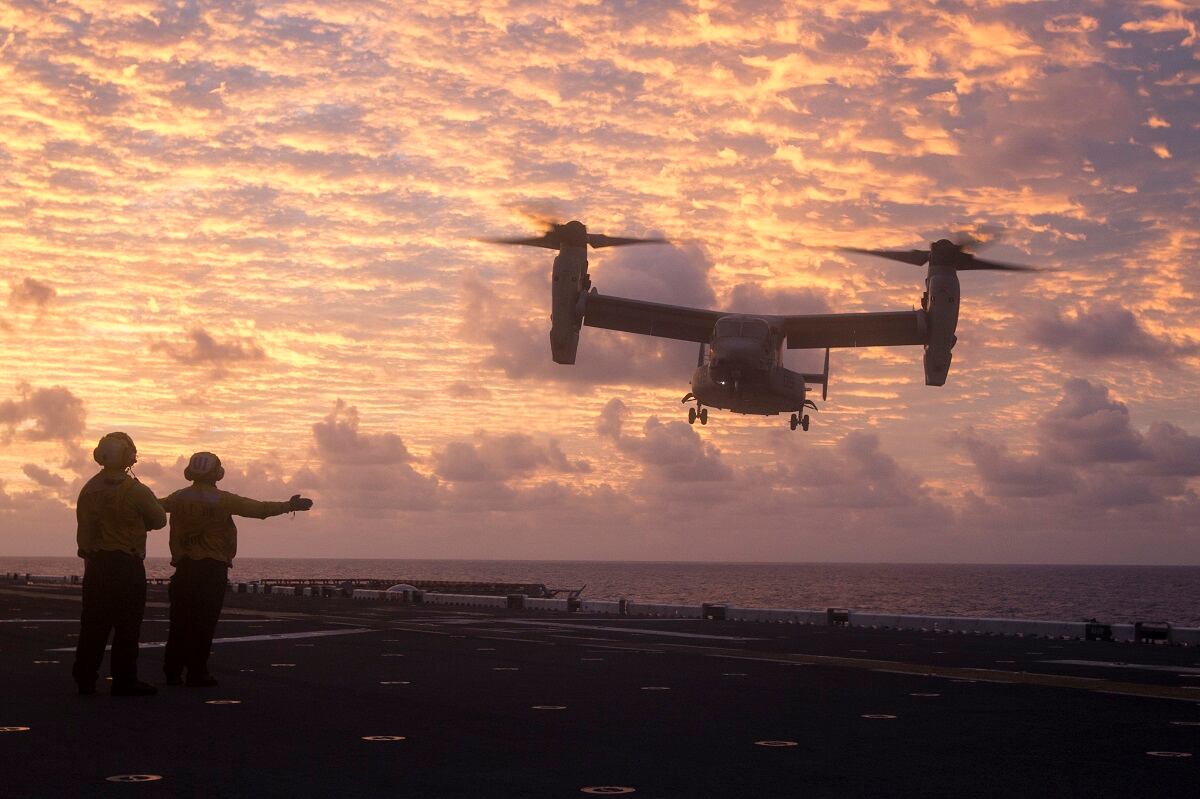Unused breathing apparatuses, Marines unable to get out of restraints, unsecured equipment, unused life preservers: This was the scene highlighted in the recently completed investigation of a tragic Marine Corps MV-22 Osprey crash that occurred Aug. 5, 2017, off the coast of Queensland, Australia, killing three.
Nine minutes is all it took for the MV-22 with Marine Medium Tiltrotor Squadron, or VMM-265, to completely submerge in the ocean after striking the starboard side of the amphibious transport dock Green Bay during a training exercise, leaving its passengers scrambling to exit an aircraft rapidly filing with water and bombarded by shifting unsecured equipment and pelican cases.
The investigation found that as the aircraft plunged into the water, Marines needed assistance removing aircrew endurance vest restraint systems, which harnessed them to the sinking Osprey.
On top of that, eight of the passengers hadn’t even restrained themselves in the seat before the crash. Those passengers, along with a pile of unsecured gear, were flung forward, creating added obstacles for others while attempting to escape.
RELATED

Some passengers had failed to properly inflate their life preservers.
Three Marines lost their lives.
Twenty-three others onboard eventually were plucked from the water by a massive search and rescue mission that included Australian divers and U.S. search and rescue assets.
When divers finally reached the Osprey two days later, 180 feet at the bottom of the ocean, they found one passenger still attached to the aircraft near the cabin door. Dive and salvage operations spanned from Aug. 7-25, 2017.
Most of the passengers, members of Golf Battery with 3rd Battalion, 5th Marines, were ill trained and unprepared for the events that unfolded that day.
“Nearly all of Golf Battery’s personnel were considered infrequent flyers,’” an ambiguous term used to designate whether Marines need to complete helicopter emergency egress training like the helicopter dunker training and helicopter aircrew breathing device training, or HABD.
Furthermore, of the 21 passengers not including the aircrew that day, 20 were with Golf Battery. Seven of the 21 passengers had not received any type of emergency egress training, the investigation stated.
In total, 384 Marines with 3/5 did not have HABD training or shallow water egress training, commonly called SWET.

The reason for the lack of the training?: “Lack of training resources, competing training requirements, rapid embarkation upon arrival in Okinawa, Japan, and lost training days due to a contract expansion,” the investigation states.
Two of the MV-22 passengers that day had attended emergency egress training but had failed the course.
In documents recovered by investigators, one of the passengers who failed said “panicking and forgetting the steps while underwater,” was his reason for not successfully completing the training.
But he, along with the rest of the “infrequent flyer” passengers, were still allowed to fly. The problem was 3/5, or the 31st Marine Expeditionary Unit they were assigned to, never considered Golf Battery’s status as infrequent flyers in the risk management portion of the mission planning, according to the investigation report.

Many Marines cite the helicopter dunker training as some of the scariest training undertaken in the military, though that often varies depending on fear of swimming and comfort in the water.
The dunker trainer includes a mock-up of a helicopter in a large pool of water. Marines go through iterations of being restrained in the helicopter while it is submerged in the water and at times rolled around or inverted. Marines have to learn where their nearest egress points are, how to remove their restraints and how to use HABD bottles.
The cause of the Aug. 5 accident likely was the result of recirculated downwash air reflecting off the hull of the Green Bay and back into the rotor blades, engineers claimed in the investigation.
Downwash occurs when a helicopter hovering recirculates the same air into its rotor blades that it is using for lift, the fast-moving recirculated air is dispersed rapidly requiring the helicopter to increase thrust to maintain flight or hover.
The pilots flying the MV-22 noticed a rapid decent of 200-300 feet per minute when they approached the Green Bay that day. The pilot attempted to correct using the thrust control lever.
But the MV-22 struck a catwalk on the starboard side of the Green Bay just below the flight deck. The Osprey pushed across the catwalk until slamming into a stair case with its blades striking the flight deck. The aircraft then plunged into the sea.
The MV-22 was totaled. Damage was also sustained to the Green Bay and a UH-IY helicopter was damaged when debris from the Osprey’s rotor blades struck the helicopter parked on the flight deck.
Shawn Snow is the senior reporter for Marine Corps Times and a Marine Corps veteran.




